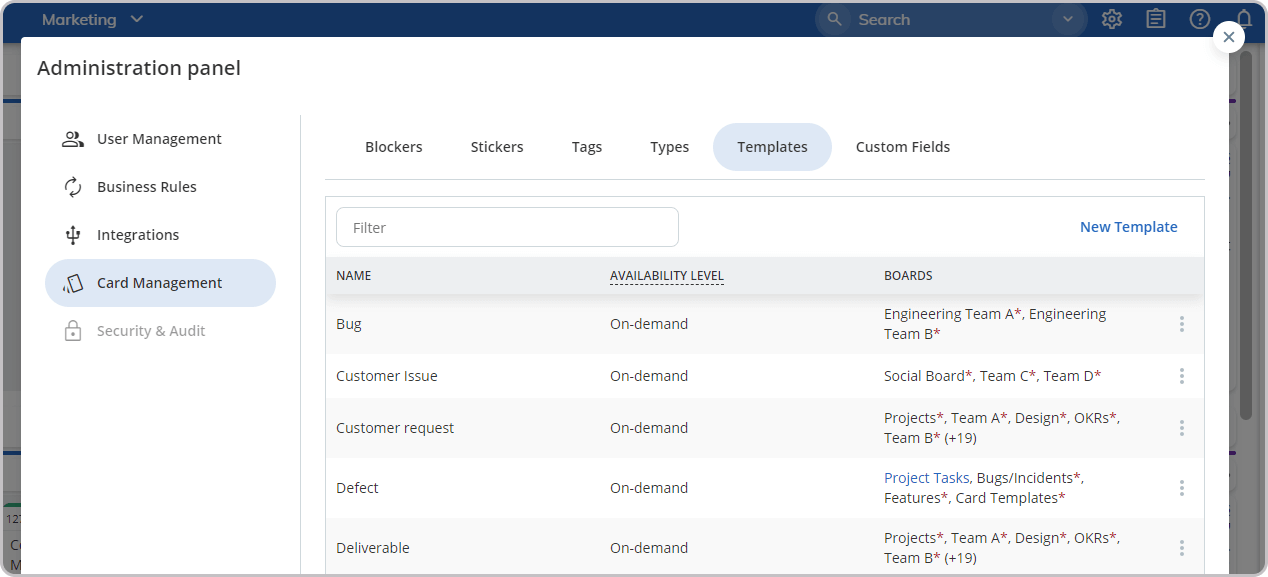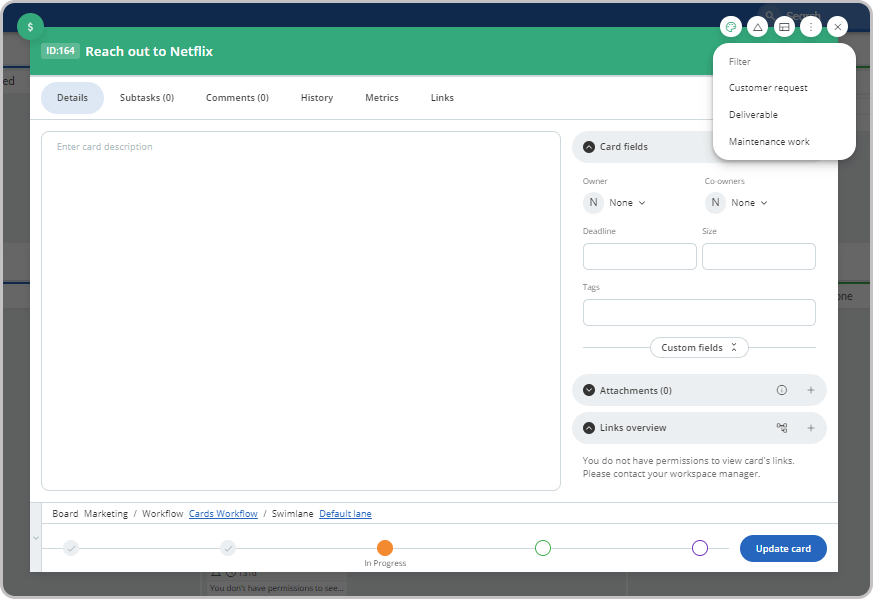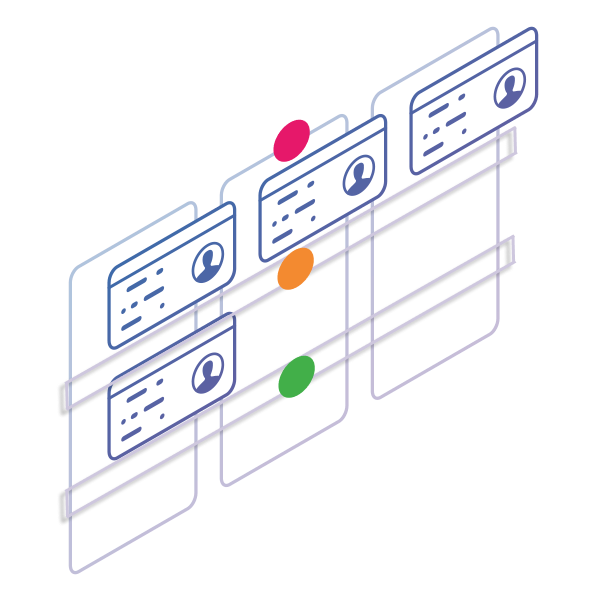The term 'Kanban' was originally conceived by the Japanese car manufacturer Toyota. It literally means “visual sign” or “visual card”.
Back in the 1940s, when Toyota used Kanban for the first time, the cards were in the form of paper notes pinned on a physical board (Kanban board). Toyota workers used the kanban card system to create a transparent work process and reduce production waste.
Around 60 years later, David J. Anderson took the original idea and set the Kanban method's foundations for knowledge work. At first, the method was implemented in the software development industry, and it had an immediate positive impact on teams’ productivity.
Nowadays, the Kanban method is widely spread across various industries: manufacturing, IT, software development, marketing, finances, etc. This is because any team will work better and smarter when it is aware of its challenges and those of the whole organization.
At the heart of the system, Kanban cards are used to track and monitor work elements throughout the process.
What Is a Kanban Card?
A Kanban card is a visual representation of a work item. Translated from Japanese, it literally means a visual (kan) card (ban). It is a core element of the Kanban system as it represents work that has been requested or is already in progress.
A Kanban card contains valuable information about the task and its status, such as a summary of the assignment, responsible person, deadline, etc.

An example of a physical Kanban card.
Indeed, Kanban cards are mainly used for visualizing your assignments' progress from the moment they're requested to the moment they're considered done. They aim to "radiate" information for a single work item so teams can stay on the same page and quickly spot work issues. With the help of Kanban cards, you can:
- Build an information hub for work assignments
- Reduce the need for status-update meetings
- Improve the overall transparency of the work process.
An essential aspect is that the number of Kanban cards in progress on the board should be limited. This way, you will avoid context switching and productivity issues.
The Nature of Digital Kanban Cards
With the help of a digital Kanban solution, you can visualize different types of work information on Kanban cards. Basically, digital cards have a front and backside where teams can input work-related details. This provides great advantage for both onsite and remote teams as they can more easily understand the work at hand and effectively collaborate on it.
Basically, digital Kanban cards have a front side and backside.
The front side gives you basic information about the task, such as description, title, assignee, cycle time, priority, and subtasks. This is the visible part of a card on a Kanban board, and it provides you with an opportunity for a quick overview of work items.

The card's backside can be used for recording valuable metrics and information while it goes through the workflow. Here, your team can leave comments, attach files and external links, and check the card's historical data. This side of a card is visible when the card is open.

Kanban Card Configurations
Different team members observe and digest information in different ways. Some prefer or need to see the whole data for a given task simultaneously, while others prefer to spot only the most pertinent information to their role.
In this sense, good Kanban software solutions offer personal card configuration options. This means every member of a given board can configure an individual card view that fits only his/her preferences.
For example, a simple Kanban card configuration that shows basic information for a task may be appropriate for daily team meetings. This way, all team members can quickly overview all current tasks without going into details.
On the other hand, every team member needs more information when working on an individual task. Therefore, a personal Kanban card configuration that reveals the maximum amount of information can simplify the work process, improve visibility, and encourage team collaboration.
Kanban cards may be configured in many different ways to show valuable information such as deadline, cycle time, attached files, subtasks, and much more. You need to find the Kanban card configuration that fits best your own working habits.
Kanban Card Templates
A great advantage of online Kanban software solutions is that you can use them to create different Kanban card templates. This is extremely helpful when there are recurring tasks involved in the workflow.
You may consider it a standardization that helps work of the same type and scope to be finished faster and within similar prescriptions.
Kanban card templates help you avoid duplicating effort and reduce the need for rework. Templates provide all team members with a clear understanding of what needs to be done and a familiar format for task completion – this is not, in any way, intended to subdue team-member creativity. Rather it allows the team to manage itself effectively and quickly recognize if assigned tasks might require special handling.

When using online Kanban solutions, the bottom line is you can create different templates that correspond to various types of work, each with their unique focus. For example, you can create a “customer bug” template, and every time there is a customer bug, you can load the relevant template while creating the card.
For example, you can create a “Feature” template, and whenever there is a feature to be developed, you can load the relevant template while creating the card.

This way, the assignee of the card will know the exact steps that need to be done, their sequence, and any other notes that might assist with this style of work.
Some software solutions like Businessmap even allow you to use default Kanban card templates on your boards. This means that you can set predefined templates for specific areas on your Kanban board (such as lane or workflow). As a result, teams can automate the creation of cards with certain templates across different areas on a board.
We offer the most flexible software platform
for outcome-driven enterprise agility.







